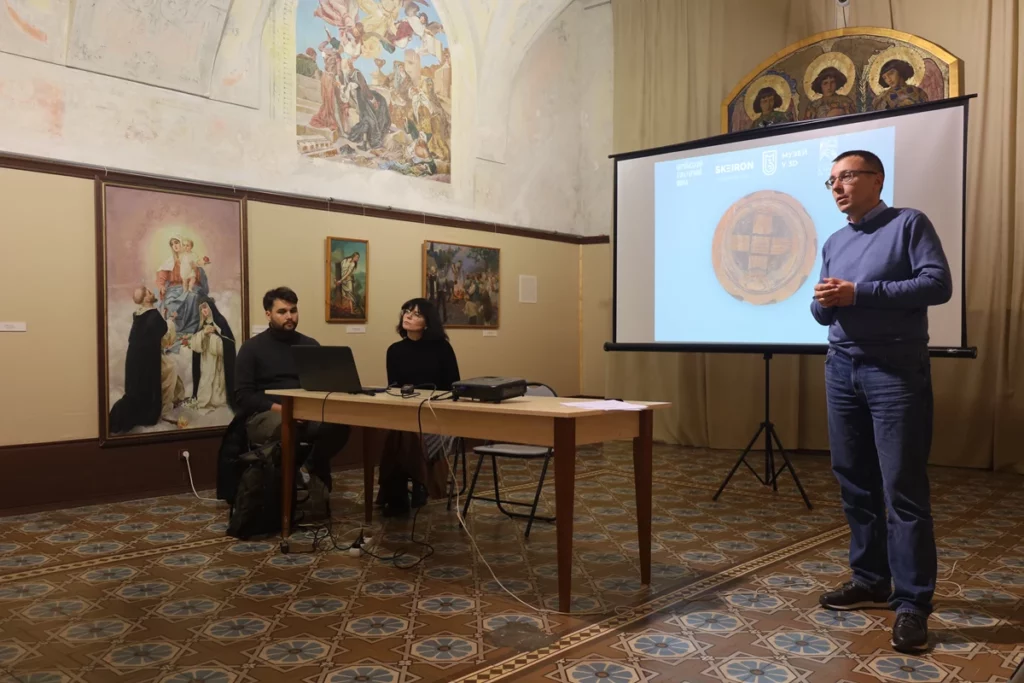The project coordinators spoke about the stages of project implementation, and also showed a website with photos and descriptions in Ukrainian and English of 1200 of the most interesting items from the museum collection.
Today, on 28 October, the Lviv Museum of the History of Religion presented the results of the project “Creation and Promotion of a Digital Archive of the Stock Collections of the Lviv Museum of the History of Religion.” The goal of the project was to popularise the museum’s cultural heritage stored in its collections by creating an accessible digital archive.
“Preservation of cultural heritage is one of the priorities of the museum industry. One of the most effective methods is digitisation. Today, we are witnessing the implementation of a large project that has resulted in the digitisation of 1200 exhibits from various stock collections of the museum.
It is worth noting that the regional military administration pays special attention to this issue. Over the past 6 years, as part of the Comprehensive Programme for the Development of Culture in Lviv Region, more than UAH 2 million has been allocated to museums of regional subordination to purchase modern technical equipment for the digitisation process. During this period, 57 thousand exhibits were digitised.
I express my gratitude to the museum staff and the Skeiron team for the work done, thanks to which we are able to preserve the most valuable examples of the world’s cultural heritage for our descendants,” said Iryna Havryliuk, Director of the Department for Culture, Nationalities and Religions of the Lviv Regional State Administration.
Museum director Orest Malyts said that the project to create a digital archive of the Lviv Museum of the History of Religion is more than just digitising the collections: “We had the ambition to preserve and present a wide range of exhibits – from ceramics to graphics, from medallions to ancient texts. Thanks to the support of Ukrainian and international partners, including cultural institutions and local experts, we were able to attract modern equipment and create a platform that will become the basis for further work.”
During the presentation, the project coordinators spoke about the stages of the project’s implementation and presented the results, including a separate website with photos and descriptions in Ukrainian and English of the most interesting items from the museum’s collection.
“This project will allow visitors not only to view artefacts in 3D on the international Sketchfab platform, but also to interact with exhibits in augmented and virtual reality. Thanks to QR codes, users will be able to see the artefacts in their own space, which opens up new opportunities for interaction with cultural heritage,” said Andriy Hryvniak, co-founder of Skeiron.
You can learn more about the archive on the website of the Lviv Museum of History at релігії. 3D models of individual exhibits are already available at this link, and the full digital catalogue will soon be available.
Project coordinator Nadiia Polianska noted that the website is adapted, with the possibility of enlarging fonts and changing the background to meet the requirements of inclusivity.
“We showed various groups of monuments: sculpture, metal, painting, graphics, numismatics, and old prints. Some of them date back thousands of years. For example, the collection includes monuments of Trypillian culture that reveal unique aspects of the history of religious life in Ukraine and across the continent, both in Europe and Asia.
This project was made possible thanks to our team, as well as the support of our partners who helped us create the website. I would especially like to thank all the museum staff, scientific consultants and restorers, without whom this project would not have been possible.
In the future, we plan to expand our collection and add new items. The 3D model website is closely linked to the database, which allows us to quickly update information about the exhibits,” added Nadiia Polianska.
The cost of the project is UAH 930 thousand. It was implemented with the financial support of the Ukrainian Cultural Foundation.

